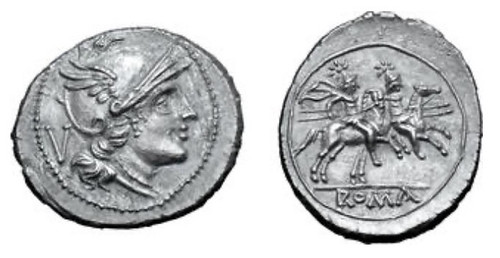
PREV ARTICLE
NEXT ARTICLE
FULL ISSUE
PREV FULL ISSUE
THE QUINARIUSIn his most recent CoinWeek Ancient Coin Series article, Mike Markowitz discusses the obscure ancient Roman coin denomination quinarius. Here's an excerpt - see the complete article online. -Editor ANCIENT ROME ISSUED coins for almost eight centuries. Among the bewildering variety of denominations that circulated during this long span of time, the quinarius stands out as one of the most obscure. Struck in both gold and silver, the type is so scarce that many experienced collectors have never even seen one. No book-length study of the quinarius appeared in English until 2007! The origin of the silver quinarius is closely linked to Rome's urgent need to pay troops with high-quality silver money in the Second Punic War (218-201 BCE), which also gave rise to its big brother, the denarius, and its diminutive, short-lived companion, the silver sestertius. The superb collection of the American Numismatic Society in New York contains 355 silver quinarii, but just 11 examples in gold. Many of these coins came from the bequest of Edward T. Newell (1886-1941). Another large group came from the collection of Charles Hersh (1923-1999) a banker, and numismatic scholar.
The First Quinarii
When it was introduced around 212 BCE, the silver denarius was valued at 10 bronze asses. The coin's obverse was prominently marked with a Roman numeral X, meaning
To read the complete article, see:
Wayne Homren, Editor The Numismatic Bibliomania Society is a non-profit organization promoting numismatic literature. See our web site at coinbooks.org. To submit items for publication in The E-Sylum, write to the Editor at this address: whomren@gmail.com To subscribe go to: https://my.binhost.com/lists/listinfo/esylum All Rights Reserved. NBS Home Page Contact the NBS webmaster 
|

